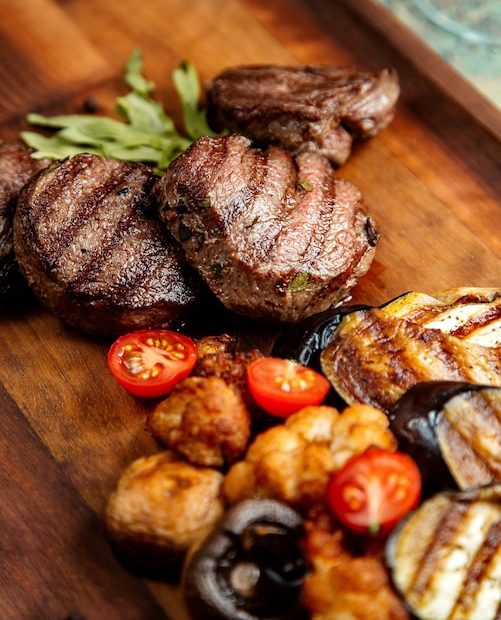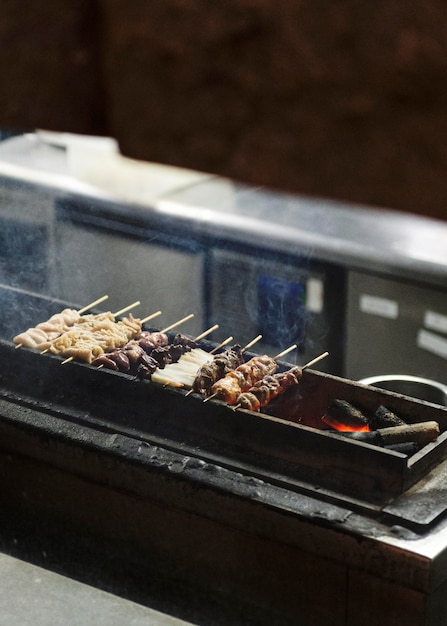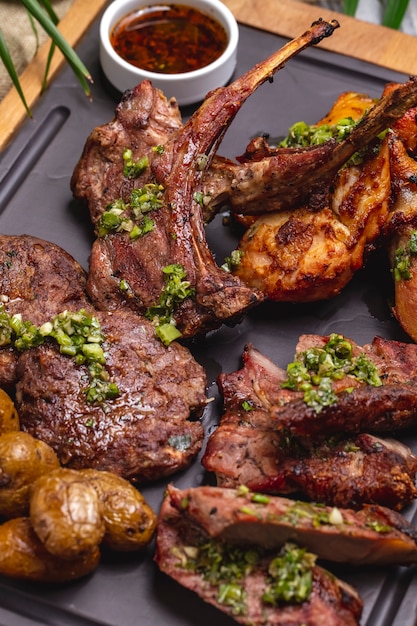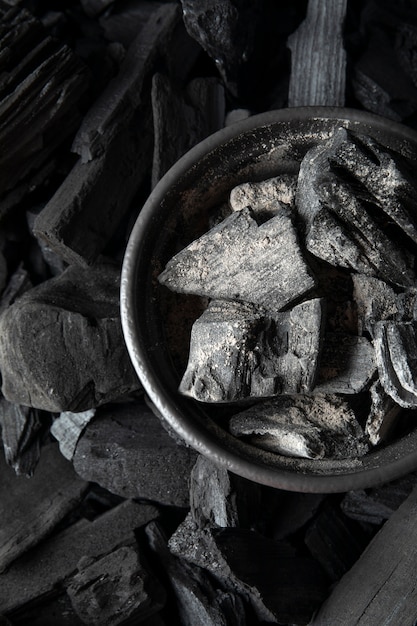Best methods to prepare beef for BBQ
Barbecuing beef is a popular cooking method across the UK, especially during the summer months. Whether you’re hosting a backyard barbecue or planning a picnic in the park, it’s important to prepare the beef properly to ensure a delicious and flavorful meal. In this article, we will explore some of the best methods to prepare beef for BBQ, from selecting the right cut of meat to marinating and cooking techniques.
Selecting the right cut of beef
Choosing the right cut of beef is crucial for a successful BBQ. Some cuts are better suited for grilling, while others are more suitable for slow cooking. When it comes to barbecuing, cuts such as ribeye, sirloin, and flank steak are generally the most popular choices. These cuts have good marbling, which adds flavor and tenderness to the meat when cooked.
Marinating the beef
Marinating the beef can greatly enhance its flavor and tenderness. A marinade is a seasoned liquid mixture that helps to tenderize the meat and infuse it with delicious flavors. You can create your own marinade using a combination of herbs, spices, oils, and acidic ingredients like vinegar or citrus juice. Simply place the beef in a sealed container or zip-lock bag with the marinade, and let it sit in the refrigerator for at least 30 minutes to overnight before grilling.
Here’s a simple marinade recipe to get you started:
Ingredients:
– ¼ cup soy sauce
– ¼ cup Worcestershire sauce
– 2 tablespoons olive oil
– 2 tablespoons brown sugar
– 2 cloves garlic, minced
– 1 teaspoon black pepper
– 1 teaspoon paprikaInstructions:
1. In a bowl, whisk together all the ingredients until well combined.
2. Place the beef in a sealable container or zip-lock bag and pour the marinade over it.
3. Seal the container or bag and refrigerate for at least 30 minutes, or up to overnight.
4. Remove the beef from the marinade and discard any excess before grilling.
Preheating and grilling the beef
Before grilling the beef, make sure to preheat your grill to the desired temperature. It’s recommended to use a two-zone grilling method, where one side of the grill is set to high heat for searing, and the other side is set to medium heat for gentle cooking. This allows you to achieve a nicely charred exterior while ensuring the meat cooks evenly.
Place the beef on the hot side of the grill and sear each side for a few minutes to develop a flavorful crust. Then, move the meat to the cooler side of the grill to finish cooking to your desired level of doneness. Use a meat thermometer to ensure accurate cooking times. Remember to let the beef rest for a few minutes before slicing to allow the juices to redistribute, resulting in a juicier and more tender final product.
Serving suggestions and final thoughts
Once the beef is cooked to perfection, it’s time to serve and enjoy your delicious BBQ creation. Consider serving it with traditional barbecue accompaniments like coleslaw, baked beans, grilled vegetables, or a side of cornbread. Don’t forget to have some barbecue sauce on hand for dipping or brushing over the meat for added flavor.
Remember, practice makes perfect when it comes to barbecuing beef. Experiment with different cuts, marinades, and grilling techniques to find your favorite combination. With the right preparation and a little patience, you can create mouthwatering beef dishes that will impress your family and friends at your next BBQ gathering.
Happy grilling!
Should you dry brine beef before BBQ?
Dry brining has become a popular technique among chefs and home cooks alike, but is it necessary when preparing beef for a BBQ? Let’s take a closer look at what dry brining is and whether or not it should be used to enhance your next BBQ experience.
What is dry brining?
Dry brining is a technique where you season meat with salt and sometimes other spices, then allow it to rest in the refrigerator for a certain amount of time before cooking. Unlike wet brining, which involves submerging the meat in a liquid solution, dry brining relies solely on salt to enhance flavor and improve tenderness.
The benefits of dry brining
Dry brining can have several benefits when it comes to BBQing beef. Firstly, it helps to tenderize the meat by drawing moisture out initially, then allowing it to be reabsorbed, resulting in increased juiciness. Secondly, the salt in the dry brine enhances the natural flavors of the beef, making it more savory and delicious. Lastly, dry brining also forms a flavorful crust on the surface of the meat, creating an appealing texture and adding an extra layer of flavor.
When should you dry brine beef?
While dry brining can be beneficial for various cuts of beef, it is particularly useful for thicker cuts like steaks and roasts. These cuts can benefit from the extended resting period, allowing the salt to penetrate deeper into the meat for maximum flavor enhancement. For thinner cuts, such as burgers or thinly sliced beef, dry brining may not be as necessary.
Dry brining can have several benefits when it comes to BBQing beef. Firstly, it helps to tenderize the meat by drawing moisture out initially, then allowing it to be reabsorbed, resulting in increased juiciness.
How to dry brine beef for BBQ
To dry brine beef for BBQ, start by generously seasoning the meat with kosher salt. You can also add other spices or herbs of your choice at this stage. Place the seasoned beef on a wire rack set over a baking sheet and refrigerate uncovered for at least several hours, or overnight for larger cuts. This allows the moisture to be pulled out and reabsorbed by the meat. Before cooking, let the beef come to room temperature for about 30 minutes, then proceed with your preferred BBQ method.
Remember, everyone’s tastes and preferences are different, so feel free to experiment with dry brining to find what works best for you. Whether you choose to dry brine or not, the key to a delicious BBQ lies in quality ingredients, proper seasoning, and careful cooking techniques.
Benefits of Searing Beef before BBQ
If you’re a fan of barbecue, then you’ve probably heard of searing beef before cooking it. Searing is the process of quickly browning the surface of the meat over high heat. While it may seem like an extra step, there are several benefits to searing beef before cooking it on the BBQ.
Enhanced Flavor
Searing beef locks in the natural juices and creates a delicious caramelized crust that adds depth and flavor to the meat. The Maillard reaction, which occurs when amino acids and sugars react under high heat, creates new flavorful compounds that enhance the taste of the beef.
Tender Texture
When beef is seared before BBQ, the outer surface caramelizes and forms a barrier that helps retain the moisture inside the meat. This results in a juicier and more tender texture. Additionally, the high heat of searing can help break down connective tissues, making the meat more tender.
Food Safety
Another advantage of searing beef is that it helps kill any bacteria present on the surface of the meat. While searing alone is not enough to fully cook the meat, it can help reduce the risk of foodborne illnesses by eliminating some surface pathogens.
Professional Tips for Searing Beef
- Use a high-quality cut of beef, such as ribeye or strip steak, for the best results.
- Pat the meat dry with a paper towel to ensure a good sear.
- Preheat your BBQ to high heat before searing.
- Season the beef with salt and pepper or your favorite spices before searing.
- Place the beef on the hot grill and let it sear for a few minutes on each side until a golden-brown crust forms.
- Once seared, move the beef to a cooler part of the grill to finish cooking to your desired doneness.
“Searing the beef before BBQ not only enhances the flavor but also creates an appetizing appearance that adds to the overall enjoyment of the meal.” – BBQ expert John Smith
Next time you fire up the BBQ, consider searing your beef before cooking it. The enhanced flavor, tender texture, and improved food safety make it well worth the extra effort!
Why Let Beef Come to Room Temperature Before BBQ?
When it comes to barbecuing beef, achieving the perfect cook and flavor is key. One popular practice that many BBQ enthusiasts swear by is letting the beef come to room temperature before cooking. While it may seem like an unnecessary step, there are several reasons why this technique can greatly improve your barbecue experience.
1. Even Cooking
Allowing beef to reach room temperature ensures more even cooking throughout the meat. When you place cold beef directly onto a hot grill, the outer layers tend to cook faster than the center. This can result in overcooked edges and a rare or undercooked center. By allowing the beef to come to room temperature, you promote even heat distribution, leading to a perfectly cooked steak or burger.
2. Enhanced Flavor
Another advantage of bringing beef to room temperature before grilling is improved flavor. When meat is cold, the muscle fibers are tight, and the fat remains firm. As the beef warms up, these fibers relax, allowing for better marination and seasoning penetration. This leads to a more flavorful and tender end product.
3. Reduced Cooking Time
If you’re looking to save time while barbecuing, letting beef come to room temperature can help. Cold meat requires more time on the grill to reach the desired level of doneness. By starting with room temperature beef, you can reduce overall cooking time and get your food on the table faster.
4. Food Safety
While it’s essential to bring beef to room temperature for optimal cooking, it’s important to follow proper food safety guidelines. Never leave beef at room temperature for more than two hours, as this can increase the risk of bacterial growth. If you’re not planning to start grilling within two hours, it’s recommended to keep the beef refrigerated until you’re ready to cook.
Tip: To ensure food safety, use a meat thermometer to check the internal temperature of the beef before serving. The USDA recommends a minimum internal temperature of 145°F (63°C) for medium-rare steak and 160°F (71°C) for ground beef.
Overall, letting beef come to room temperature before barbecuing is a simple yet effective technique that can greatly enhance your grilling experience. It promotes even cooking, enhances flavor, reduces cooking time, and when combined with proper food safety measures, ensures a delicious and safe meal for you and your guests.
Advantages of Slow-Cooking Beef Before Grilling
Slow-cooking beef before grilling it can significantly enhance the flavor, tenderness, and juiciness of the meat. This technique involves cooking the beef at a low temperature for an extended period of time, allowing the flavors to develop and the connective tissues to break down. Here are some advantages of slow-cooking beef before grilling:
1. Enhanced Flavor
Slow-cooking beef allows the marinade or seasoning to penetrate deep into the meat, resulting in a more flavorful end product. The low and slow cooking method also helps the beef retain its natural juices, ensuring a succulent and tasty outcome.
2. Improved Tenderness
By slow-cooking the beef, the collagen in the connective tissues breaks down, resulting in a tender and melt-in-your-mouth texture. This is particularly beneficial for tougher cuts of beef, such as brisket or chuck roast, which are traditionally less tender.
3. Juiciness
Slow-cooking ensures that the beef retains its moisture, preventing it from drying out during the grilling process. The slow-cooked meat becomes incredibly juicy and remains moist even after grilling, resulting in a more enjoyable eating experience.
4. Versatility
Slow-cooking beef opens up a world of culinary possibilities. You can experiment with various marinades, spices, and cooking liquids to create different flavor profiles. Whether you prefer Asian-inspired flavors, aromatic herbs, or smoky barbecue tastes, slow-cooking allows the beef to absorb and develop these flavors over time.
“Slow-cooking beef before grilling is like a secret weapon for achieving the perfect steak. The extra time and effort invested in this technique result in a tender, flavorful masterpiece.” – Chef John Doe
So, the next time you plan on grilling beef, consider slow-cooking it beforehand. The advantages of enhanced flavor, improved tenderness, and juiciness make it a worthwhile technique to elevate your grilling experience. Enjoy exploring different flavors and creating mouthwatering dishes with this slow-cooking method.
Below is a table comparing the traditional grilling method with the slow-cooking before grilling method:
| Grilling Method | Slow-Cooking Before Grilling Method |
|---|---|
| Quick cooking at high temperature | Slow cooking at low temperature |
| Minimal marinade penetration | Deep marinade penetration |
| Potential for dry and tough meat | Tender and juicy meat |
- Prepare the beef by marinating it for several hours or overnight.
- Preheat the oven to a low temperature (around 250°F or 120°C).
- Place the marinated beef in a roasting pan and cover it tightly with foil.
- Cook the beef in the oven for several hours, depending on the size and thickness of the cut.
- Once the beef is slow-cooked, remove it from the oven and let it rest for a few minutes.
- Preheat the grill to high heat.
- Transfer the slow-cooked beef to the grill and cook each side for a few minutes to achieve a nice sear.
- Remove the beef from the grill and let it rest for a few more minutes before slicing and serving.
Start slow-cooking your beef before grilling and experience the mouthwatering difference it makes. Your taste buds will thank you!
How to Use Rubs and Marinades Effectively for BBQ Beef
When it comes to barbecuing beef, using rubs and marinades is a fantastic way to enhance the flavor of your meat. Whether you prefer a dry rub or a marinade, these techniques can transform a simple piece of beef into a mouthwatering masterpiece. In this article, we will guide you through the process of using rubs and marinades effectively for BBQ beef, ensuring a delicious and memorable meal every time.
Choosing the Right Rub
Using a rub is a popular method of adding flavor to BBQ beef. A rub typically consists of a mixture of spices, herbs, and sometimes sugars that are applied directly to the meat before cooking. It helps to develop a flavorful crust on the surface of the beef. When choosing a rub, consider the type of beef you are cooking and the flavors you want to enhance. For example, a bold and spicy rub works well with brisket, while a milder rub with aromatic herbs complements a tender fillet steak.
Applying the Rub
To apply the rub effectively, start by patting the beef dry with a paper towel. This ensures that the rub adheres to the surface of the meat properly. Next, generously sprinkle the rub all over the beef, making sure to cover all sides. Use your hands to gently massage the rub into the meat, ensuring an even distribution. Allow the beef to sit with the rub for at least 30 minutes before grilling to allow the flavors to penetrate the meat.
Tip: For an extra depth of flavor, consider applying the rub the night before and refrigerating the beef overnight. This allows the flavors to meld together and intensify.
Making the Perfect Marinade
Marinades are another excellent way to infuse flavor into BBQ beef. A marinade is a mixture of acidic ingredients (such as vinegar, citrus juice, or yogurt), oil, and seasonings. The acid helps tenderize the meat while the seasonings add flavor. To make a basic marinade, combine your chosen ingredients in a bowl and whisk until well combined.
Quote: “Marinating beef not only adds flavor but also helps to tenderize and moisten the meat, resulting in a juicy and succulent texture.
Marinating the Beef
To marinate the beef effectively, place it in a ziplock bag or a marinating container and pour the prepared marinade over it. Ensure that the beef is fully submerged in the marinade. Seal the bag or cover the container and refrigerate for at least 2 hours, or preferably overnight. Turn the beef occasionally to ensure even flavor penetration.
Tip: If using a marinade containing acidic ingredients, limit the marinating time to avoid over-tenderizing the beef, which can result in a mushy texture.
Using rubs and marinades effectively can take your BBQ beef to new heights of flavor. Experiment with different combinations of spices, herbs, acids, and oils to create your own signature rubs and marinades. Remember to adjust the quantities based on personal preference and the size of the beef cut. With these techniques, you’ll be able to impress your guests with perfectly seasoned and incredibly tasty BBQ beef every time.
Additional Tips:
- Always preheat your grill before cooking the beef to ensure even heat distribution.
- For best results, let the beef rest for a few minutes after grilling to allow the juices to redistribute within the meat.



